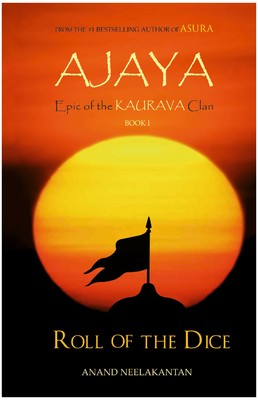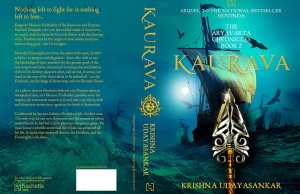Ajaya – Roll Of The Dice | Book Review
Right from calling Duryodhana as Suyodhana and Dusshasana becoming Sushasana, a clever change from ‘dur’ (negative) to ‘su’ (positive), to giving a voice to the unsung heroes of the greatest epic from India, Anand Neelakantan has aptly made all his readers see the other side of the story in his book ‘Ajaya – Epic of the Kaurava Clan – Book 1’. I read the author’s debut novel ‘Asura – The Tale of the Vanquished’ just because it’s title had intrigued me and it did not fail my instincts. What the author did with Asura, diving dark and deep into the lives of Ravana his daughter Sita who is married to Rama and also a certain common man named Bhadra – a counter-view at Ramayana, he repeated it with Mahabharata in Ajaya.
For the first time you will come across the story of The Mahabharata from the perspective of the ones who had fallen at Kurukshetra. Ajaya gives us a narrative about the role of Kauravas, who were decimated to the last man, as they would have seen it. We all know Duryodhana as the eldest of the 100 brother Kaurava clan. We know him as the most cunning prince in Mahabharata, a character hated by one and all. But with Ajaya, we see him in a different shade. You see the well-known villian become a protagonist in this tale and though it might be hard to digest for many, if you happen to read it through the first few pages, you will read it till the last and look forward to the second book in the series. 
The entire book has been written completely in favor of Kauravas and their allies such as Karna, Jarasandha, Jayadratha and Sishupala whereas the Pandavas are shown in a completely negative shade. For a nation that has been raised up hearing the virtues of the Pandavas, the first few pages will come as a blow on every mind. Thunder hit my head to read about Lord Krishna portrayed as a womanizer villain. Like every other book that tries to break the shackles of the usual story-telling into something very non-contemporary, it is totally up to the reader if he wants to accept the standpoint or not. It is important to bring to the notice that while the original epic is a mythological tale and its characters are divine and some of them have magical powers, in this book the author approaches everything logically and scientifically, which is bound to be appreciated by all. The simple and gripping writing style coupled with fast-paced story throughout the book is sure to make you enjoy the book.
Overall Rating – 3.5/5
|
← Previous Story ‘Shut Up And Train’ – by Deanne Panday | Book Review
|
You may also like...
1 Comment
Leave a Reply
Cancel reply
-
Advertisement
Copyright © 2020 Indian Nerve. All Rights Reserved.




Pingback: ‘Rise of Kali – Duryodhana’s Mahabharata’ By Anand Neelakantan | Book Review | Indian Nerve